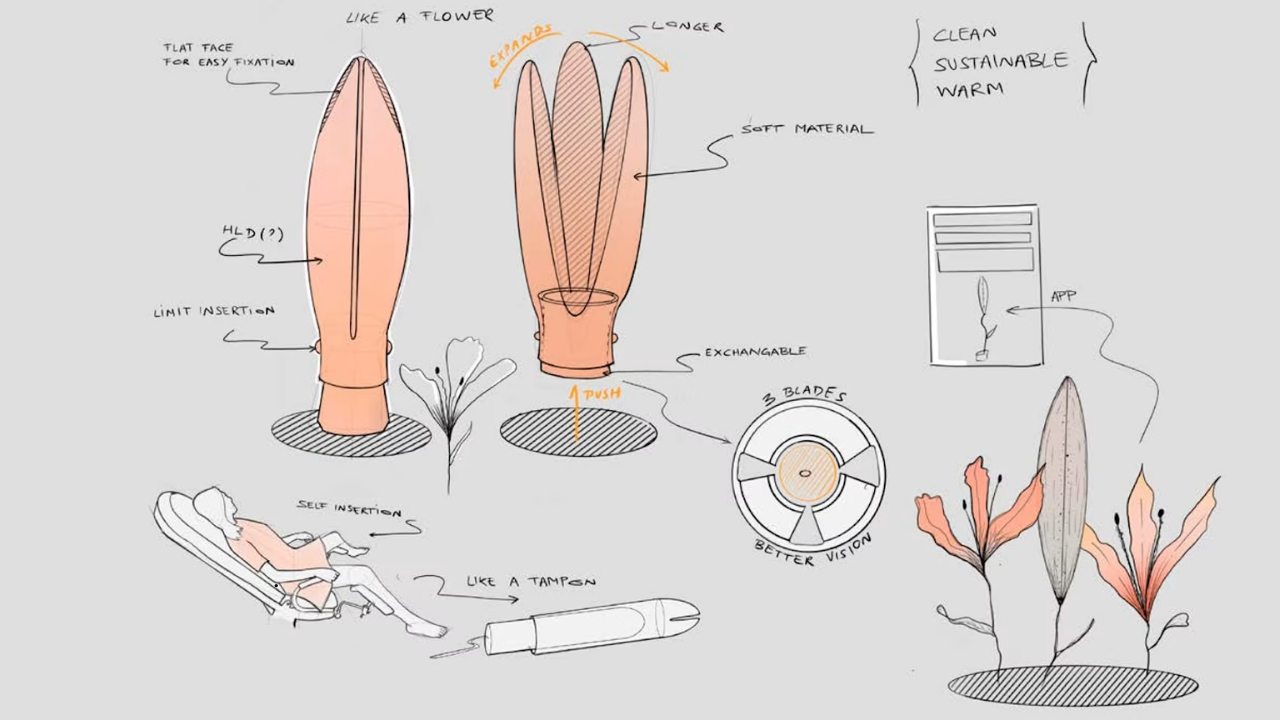- Health Conditions A-Z
- Health & Wellness
- Nutrition
- Fitness
- Health News
- Ayurveda
- Videos
- Medicine A-Z
- Parenting
- Web Stories
Why Ignoring That Nausea Which 'Comes And Goes' Could Be Dangerous For Your Heart

Credits: Canva
Most of us brush off nausea. We blame something we ate, stress, skipping a meal, or even the weather. But what if your body is whispering something far more serious? If nausea keeps coming and going—especially if you're over 40 or dealing with other health issues—it could be more than just a stomach quirk. It might be your heart.
Sounds dramatic? It isn’t. In fact, experts warn that this seemingly minor symptom could be an early sign of heart trouble, particularly in women and older adults. And it often goes unnoticed—until it’s too late.
We tend to associate heart attacks with clutching chest pain and collapsing. That’s partly why subtle or unusual signs—like nausea—get ignored. But doctors are sounding the alarm that the body doesn’t always scream when the heart is in trouble. Sometimes, it nudges.
“One of the most overlooked warning signs of heart trouble, especially among Indian patients, is nausea or a vague, unsettled feeling in the chest that comes and goes,” says Dr Yusuf M M, Consultant Cardiac Surgeon at Apollo Hospital, Chennai. “Most people don’t link this to the heart. They assume it’s acidity, gas, or just fatigue.”
Unfortunately, that assumption can delay critical care. According to Dr Yusuf, many patients come in days or even weeks after first experiencing these “weird” sensations, only to learn they were actually early symptoms of a cardiac event. “Not all heart symptoms are dramatic,” he explains. “Chest pain might feel like tightness, dullness, or heaviness. Nausea, dizziness, or a cold sweat—especially if it’s unusual or recurring—should never be ignored.”
Why Is There A Gender Gap in Heart Symptoms?
Women are especially at risk of missing the signs. Studies show that women tend to have “atypical” symptoms during heart attacks—nausea, fatigue, back pain, and shortness of breath—rather than the textbook crushing chest pain seen in men.
Because these symptoms are vague, they’re often misattributed to hormonal fluctuations, gastrointestinal issues, or stress. This makes it even more important to look at the bigger picture.
Is the nausea happening alongside breathlessness, sweating, or unusual fatigue? Does it come on during physical exertion or after emotional stress? If yes, it’s time to stop dismissing and start investigating.
Why We Often Overlook Heart Signs?
In many parts of the world, including India and the US, over-the-counter remedies are often the first line of defense. A wave of nausea? Pop an antacid. Feeling uneasy? Try some ginger tea. While these may ease temporary discomfort, they can also mask serious issues.
“In India, where home remedies are common, we often miss the critical window for early intervention,” says Dr Yusuf. “That’s why even mild or odd symptoms deserve a closer look.”
But this pattern isn’t limited to one region. Across the globe, people routinely downplay symptoms out of fear, denial, or the simple belief that “it’s probably nothing.” In the case of heart issues, this mindset can be dangerous.
Who’s Most at Risk?
Dr Anbarasu Mohanraj, Clinical Lead & Senior Consultant, Cardiovascular & Thoracic Surgery at Kauvery Hospital, Chennai, outlines a key principle: when it comes to the heart, “the body usually whispers before it screams.”
According to him, lingering nausea, sudden dizziness, or vague chest discomfort shouldn’t be casually dismissed—especially if you fall into a higher-risk category. This includes people over 40, or anyone with high blood pressure, diabetes, a family history of heart disease, or a high-stress sedentary lifestyle.
“Prevention begins with paying attention,” Dr Anbarasu says. “If something feels off and you can’t explain it, get a quick ECG or cardiac enzyme test. These are simple, accessible, and can detect issues before they escalate.”
He also emphasizes that many heart conditions are manageable if detected early. What stands in the way? “Getting people to seek help before it’s too late. A little vigilance can save a life.”
When to Visit The Doctor?
Not every wave of nausea is a cause for panic. But patterns matter. Here’s what doctors suggest looking out for:
- Nausea that recurs without clear cause
- Accompanying symptoms like sweating, lightheadedness, breathlessness, or chest discomfort
- Nausea during physical activity or stressful situations
- Family history of heart disease or personal history of lifestyle risk factors
If you experience any of the above, don’t wait for it to get worse. Seek medical evaluation. An ECG, blood tests, or even a quick physical exam could make all the difference.
Your body is smarter than you think. It rarely throws out signals without reason. So, when nausea keeps showing up uninvited, listen to it. Don’t settle for assumptions or temporary relief.
Instead, ask the tough question- Could this be my heart trying to get my attention? As Dr Anbarasu puts it, “These minor signs could be your early warning. Don’t ignore your symptoms.”
In the end, it’s not about living in fear. It’s about paying attention—to the little things, the odd feelings, the symptoms that don’t quite make sense. Because sometimes, the difference between a scare and a crisis is simply getting checked in time.
If you’ve been brushing off recurring nausea, pause. Reflect, especially if you're over 40, living a high-stress life, or have known risk factors. The next time it happens, don’t reach for an antacid right away.
180 Years After The Original Vaginal Speculum Was Invented, It Gets Redesigned: How Does The New 'Lilly-inspired' Device Ease Pain And Fear?

Credits: AFP
For nearly 180 years, the vaginal speculum has remained largely unchanged: cold, metallic, and intimidating. Invented by Dr. James Marion Sims in the mid-19th century and originally tested unethically on enslaved women, the speculum’s history alone is enough to cause discomfort for many. However, it’s not just its past that’s problematic, patients frequently report physical pain, emotional distress, and anxiety linked to the device’s design and clinical use.
While many clinicians have considered it a necessary evil, a growing wave of medical designers, engineers, and gynecologists are challenging that notion, advocating for innovation that centers the patient’s emotional and physical well-being.
The Flower That May Redefine Pelvic Exams

Enter the Lilium, a new, flower-inspired speculum design created by two engineers from Delft University of Technology in the Netherlands: Tamara Hoveling and Ariadna Izcara Gual.
Designed to resemble a blooming lily, the Lilium was conceived as a direct response to the emotional and physical discomfort women often feel during pelvic exams.
Made with soft plastic and featuring an applicator similar to a tampon, the Lilium is shaped to open like a flower, providing better visibility for clinicians while being significantly less intimidating for patients. It also eliminates the harsh clicking sounds and rigid, cold sensation associated with the traditional metal models.
“The aim was to create something familiar, symbolic of the reproductive system, and emotionally safe,” Hoveling said, emphasizing that trauma-informed design can make all the difference in encouraging routine screening.
What the Experts Say
Dr. Archana Dhawan Bajaj, Gynaecologist and IVF Expert at Nurture, strongly supports the redesign. Speaking to Health and Me, she shared how many patients, especially first-timers or trauma survivors, avoid gynecological exams purely because of how threatening the traditional speculum appears.
“It’s cold, mechanical, and terrifying. Many women skip vital preventive exams like Pap smears simply due to fear. A gentler, flower-like design like Lilium not only reduces pain but also the stigma and fear surrounding such check-ups,” said Dr. Bajaj.
She believes the Lilium offers more than aesthetic comfort, it symbolizes empathy in care. “Its soft texture, warmer material, and symbolism of blooming can help women associate pelvic exams with care rather than dread,” she added.
It’s Not Just Physical, It’s Emotional
Pain during pelvic exams isn’t solely physical. Dr. Bajaj explains that anxiety, fear of discomfort, and past trauma often make the experience worse.
“The cycle of fear leads to muscle tension, which increases pain. And that pain only reinforces the fear,” she said. “A redesign like this breaks that cycle. It helps the patient relax, trust the process, and stay engaged with their reproductive health.”
Such emotional consideration is especially crucial for survivors of sexual trauma and post-menopausal women, for whom speculum insertion can be especially distressing.
A History of Redesign Attempts
Lilium isn’t the first attempt at a redesign. Over the years, several models have tried to address comfort:
FemSpec (2005): An inflatable speculum that mimicked a blood pressure cuff. Though it got FDA approval, it was withdrawn in 2008 due to clinical impracticality and physician resistance.
Callascope: A tampon-sized device with a built-in camera for cervical visualization. It bypasses the need for dilation but still faces challenges in physician acceptance and cost-effectiveness.
Nella and Yona: Ergonomic updates to the traditional model. Nella introduced quieter operations and smoother polymers, while the Yona design, developed by San Francisco firm Frog, experimented with a 105-degree angled handle, silicone materials, and a softer, less intimidating shape inspired by sex toy design.
Despite these efforts, none have received the kind of widespread support that Lilium is beginning to garner, thanks, in part, to its empathetic approach and viral crowdfunding campaign, which raised over €100,000 in just two days.
Beyond Design: Why Empathy Matters
The redesign of gynecological tools like the speculum isn’t just about comfort, it’s about dignity, access, and trust. According to Dr. Bajaj:
“Empathetic instruments say something powerful: we value your emotional well-being as much as your physical health.”
This matters. Studies and surveys show that a significant portion of women avoid screenings due to fear or discomfort. In fact, a 2020 study found that 13.6% of women skipped cervical smears due to painful past experiences with speculums.
By designing tools that prioritize empathy and accessibility, we don’t just change devices, we change behaviors. More women are likely to attend screenings, leading to earlier diagnosis, more open conversations about reproductive health, and ultimately, lives saved.
Lilium is still undergoing ergonomic testing, human trials, and regulatory review. But its success so far is an important signal.
“This is not just about a speculum, it’s a symbol of progress in how medicine treats women,” says Dr. Bajaj. “It invites patients in, rather than scaring them off. That’s the future of gynecological care.”
About 84% IT Employees Are Suffering With Fatty Liver Disease - Why Screenings Are Necessary For Corporate Workers

(Credit-Canva)
Obesity has been an increasing health risk globally, with many countries tackling it with healthier food options, more affordable access to health institutions and as well as encouraging people to take up healthier habits like walking, by making the cities more foot accessible. In India, we are witnessing obesity rising as a major health concern. According to the National Health Survey 2019-21, 24% woman and 23% men were overweight.
But why is obesity such a big concern? As you may know, it increases the risk of other health issues and is a big issue for those who spend prolonged hours being sedentary due to their work like IT employees. A study highlighted this concern in the growing IT hub, Hyderabad.
Unhealthy Lifestyles and Liver Disease in IT Workers
A study published in the Scientific Reports Journal looked at the health of IT employees in Hyderabad, India, and found a surprisingly high number of them have a liver condition called Metabolic Dysfunction-Associated Fatty Liver Disease (MAFLD). This disease, which is often linked to an unhealthy lifestyle, was found in a huge majority of the workers studied. The study, which included 345 IT employees, found that their work habits were putting them at high risk for health problems.
High Prevalence of MAFLD: A staggering 84% of the IT employees had MAFLD. This is much higher than the general population.
Lifestyle Risks: The study showed that many of the employees had unhealthy habits. For example:
- 72% sat for long hours at work.
- 70% got too little sleep.
- 38% reported high stress levels.
Health Issues: These lifestyle factors were linked to other health problems:
- 70% were obese.
- 34% had Metabolic Syndrome, a cluster of conditions that increase the risk of heart disease and diabetes.
- 76% had high levels of "bad" cholesterol (LDL-C).
What Is MAFLD?
According to the Journal of Physiology and Biochemistry, Metabolic dysfunction-associated fatty liver disease (MAFLD) is now understood to be the liver's response to a group of health problems known as metabolic syndrome. As rates of obesity and diabetes rise globally, MAFLD is becoming more common. This disease can range from simple fat buildup in the liver to a more serious condition called NASH (non-alcoholic steatohepatitis), which can lead to severe liver scarring (cirrhosis) and even liver cancer.
For a long time, MAFLD was difficult to treat because it's a very complex disease. However, in the last 20 years, scientists have been testing many new drugs, and the results are promising. Recent studies have focused on drugs that can tackle the three main issues with MAFLD:
- Fat buildup in the liver.
- Inflammation (swelling).
- Fibrosis (scarring).
In the next few years, it's very likely that doctors will have new medications to help people with MAFLD at different stages. This is a huge step forward in treating this widespread health problem.
What This Means for IT Workers
The study's findings highlight an urgent need for action. The sedentary nature of IT work, combined with unhealthy eating and stress, is creating a serious health risk for a large number of employees. MAFLD can get worse over time and lead to severe liver problems that have no cure.
The researchers recommend that IT companies and the government create health programs to help these employees. This includes encouraging more physical activity, promoting better diets, and providing regular health screenings to catch diseases like MAFLD early.
How Is The Indian Government Tackling This Issue?
Union Health Minister JP Nadda recently informed Parliament that the government is taking action to address the growing issue of fatty liver disease. He stated that all states have been asked to screen citizens to identify and manage the condition.
An Indian Council of Medical Research (ICMR) study, conducted in with the Institute of Biliary and Liver Disease on a project called the Indian Metabolic and Liver Disease (IMELD) Study. The goal of this project is to create a screening tool for fatty liver disease by studying health data from different parts of India.
The first phase of this study took place in three districts of Jaipur, Rajasthan. The IMELD study successfully raised awareness about liver health by screening people for fatty liver using a special device called a Fibroscan. It also checked participants for other health conditions like diabetes and high blood pressure.
Just Looking At A Sick Person Can Trigger And Set Off Your Immune System

Credits: Canva
You've likely been through this when someone in the distance coughs or appears obviously sick, and you naturally change seats, look away, or quash a pang of unease. As it happens, that response isn't merely social learning or a wish not to catch something. It's your immune system going stealthily into high gear.
A recent study, published in Nature Neuroscience, finds that simply viewing indications of disease—even on a virtual individual—can prepare your brain and initiate immune responses, all without touching. Scientists employed virtual reality (VR) to examine how sensitive the human brain is to future health threats, and the findings are not only compelling—they're significant from a biological standpoint.
Researchers outfitted healthy adults with VR headsets that displayed avatars at different distances. Some avatars had feverish rashes or other visible signs of illness, while others looked neutral or simply fearful.
When participants viewed the "sick" avatars, their brains lit up in specific ways. Regions tied to threat detection, such as the hypothalamus, showed increased activity. And remarkably, these brain changes were accompanied by an uptick in immune activity—specifically, a rise in innate lymphoid cells (ILCs). These cells are typically mobilized when the body detects a pathogen physically. But in this case, there was no exposure—only the sight of illness.
ILCs are part of the body’s first line of defense. They're fast-acting, non-specific immune responders that kick in before antibodies have a chance to form. Think of them as your body’s internal first responders—and this study shows they might not even need a real fire to spring into action. A fire drill will do.
What Is The Immune System's Early Warning Radar?
Andrea Serino, one of the study’s senior authors, describes the body’s response as a kind of biological surveillance system. The brain spots a potential threat, and instead of waiting for direct contact, it nudges the immune system to be on standby. It's a bit like a security guard watching someone act suspiciously on a monitor—they may not be shoplifting yet, but help is already being called.
This system likely evolved to offer a head start against infections, which can spread rapidly. By giving the immune system even a few hours’ lead time, the brain buys the body precious time to gear up defenses. And it doesn't stop there. The study found that participants who viewed a virtual sick person reacted faster to physical stimuli (like a touch to the face) than when they viewed neutral or fearful avatars—evidence that the whole sensory system was more alert.
How Does Distance Makes the Body More Defensive?
One surprising twist: sick avatars that were shown further away triggered stronger brain and immune responses than those up close. That might seem counterintuitive, but researchers believe it speaks to the anticipatory nature of the brain. If a threat is far but approaching, the brain signals the body to prepare now. If the threat is already near, the body may consider it too late for prep—and instead focus on managing direct exposure.
Interestingly, some of the same brain areas activated in the study are also stimulated after a flu shot. That’s not a coincidence. Both experiences simulate exposure to a pathogen, whether real or perceived. Your brain doesn’t like to gamble when it comes to survival.
Is It The Body's Disgust or Defense?
Disgust plays a curious role here too. That natural recoil you feel when someone looks visibly unwell? It’s not just cultural. It’s also neurological.
The research broaches the concept that our feeling of disgust is perhaps an evolutionary behavioral immune system. That aversion aids us in keeping social distance away from potential carriers of infection. Researchers are still investigating how perceived infectiousness and disgust work together, but the research indicates this reaction is innately wired.
So, the next time you instinctively cringe when someone sneezes nearby or looks flushed and feverish—it’s not rudeness. It’s your body’s way of saying, “Heads up. Something’s not right.”
What this study powerfully underscores is that immunity isn’t just a physical reaction—it’s a neuro-immune conversation. Your brain doesn’t wait for pathogens to invade. It watches, it predicts, and it acts.
This has implications beyond the occasional cold season. It opens doors for understanding psychosomatic illness, autoimmune disorders, and even how chronic stress affects immunity. If simply perceiving a threat can trigger immune activity, what happens when people live in high-stress, high-alert states constantly?
It also highlights the sophistication of the human body. We’re not just passive recipients of disease. We’re vigilant systems designed to anticipate, respond, and sometimes even overreact to stay safe.
While the study provides strong evidence for visual illness triggering immune changes, it also raises important questions. For example:
Could this immune priming have downsides, such as contributing to chronic inflammation or anxiety?
Do people with autoimmune conditions react differently to perceived threats?
Can this mechanism be harnessed to boost immunity in vulnerable populations?
More research is needed to answer these questions, but what’s clear is that our immune system doesn’t start at our skin. It begins in the brain, the moment it sees something that doesn't look right.
You might not realize it, but your body is constantly scanning for danger—even from across the room. And in many cases, it reacts before you consciously know why. This study offers a compelling glimpse into just how interconnected the brain and immune system are.
© 2024 Bennett, Coleman & Company Limited

